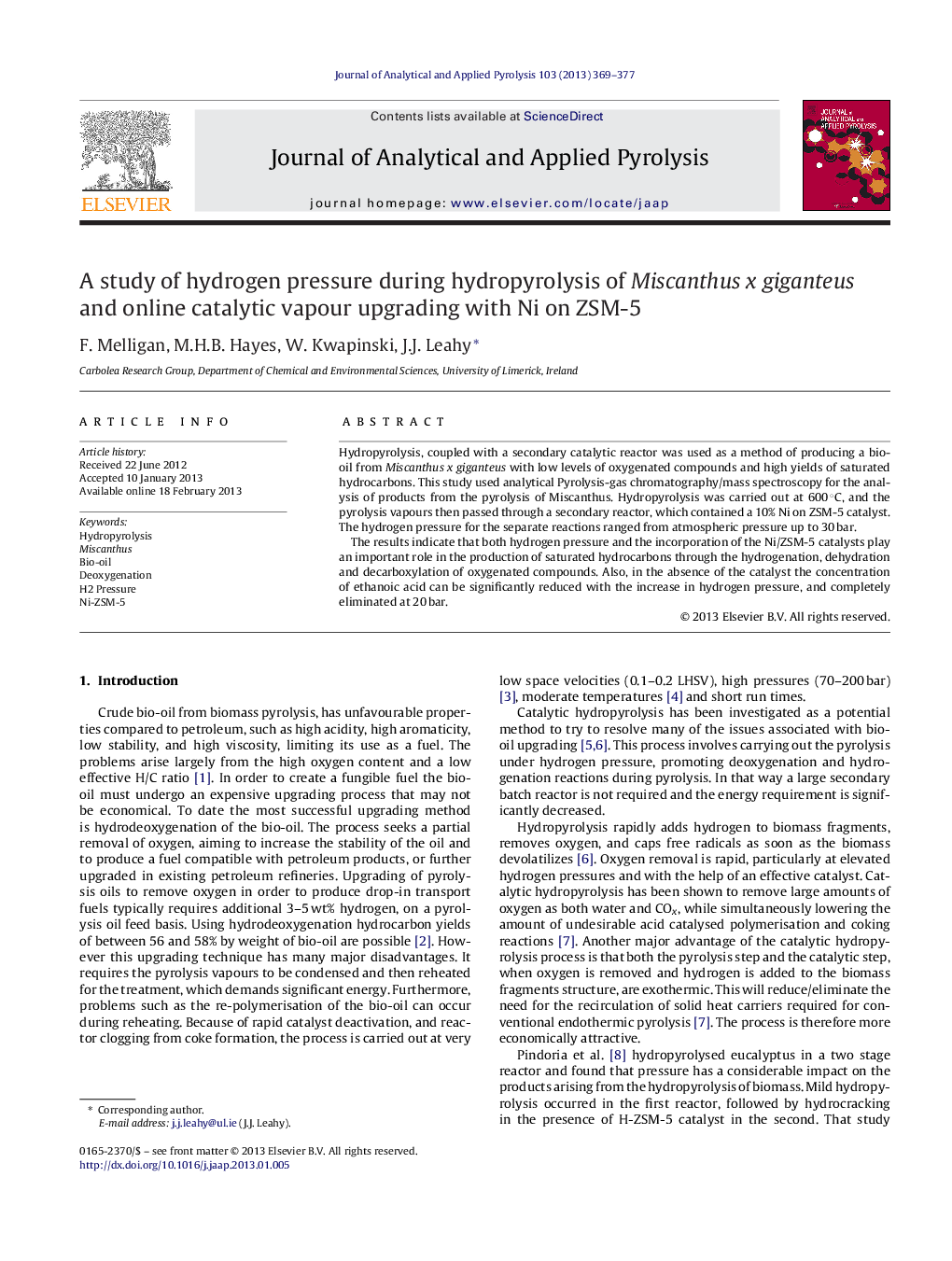| Article ID | Journal | Published Year | Pages | File Type |
|---|---|---|---|---|
| 1197208 | Journal of Analytical and Applied Pyrolysis | 2013 | 9 Pages |
Hydropyrolysis, coupled with a secondary catalytic reactor was used as a method of producing a bio-oil from Miscanthus x giganteus with low levels of oxygenated compounds and high yields of saturated hydrocarbons. This study used analytical Pyrolysis-gas chromatography/mass spectroscopy for the analysis of products from the pyrolysis of Miscanthus. Hydropyrolysis was carried out at 600 °C, and the pyrolysis vapours then passed through a secondary reactor, which contained a 10% Ni on ZSM-5 catalyst. The hydrogen pressure for the separate reactions ranged from atmospheric pressure up to 30 bar.The results indicate that both hydrogen pressure and the incorporation of the Ni/ZSM-5 catalysts play an important role in the production of saturated hydrocarbons through the hydrogenation, dehydration and decarboxylation of oxygenated compounds. Also, in the absence of the catalyst the concentration of ethanoic acid can be significantly reduced with the increase in hydrogen pressure, and completely eliminated at 20 bar.
